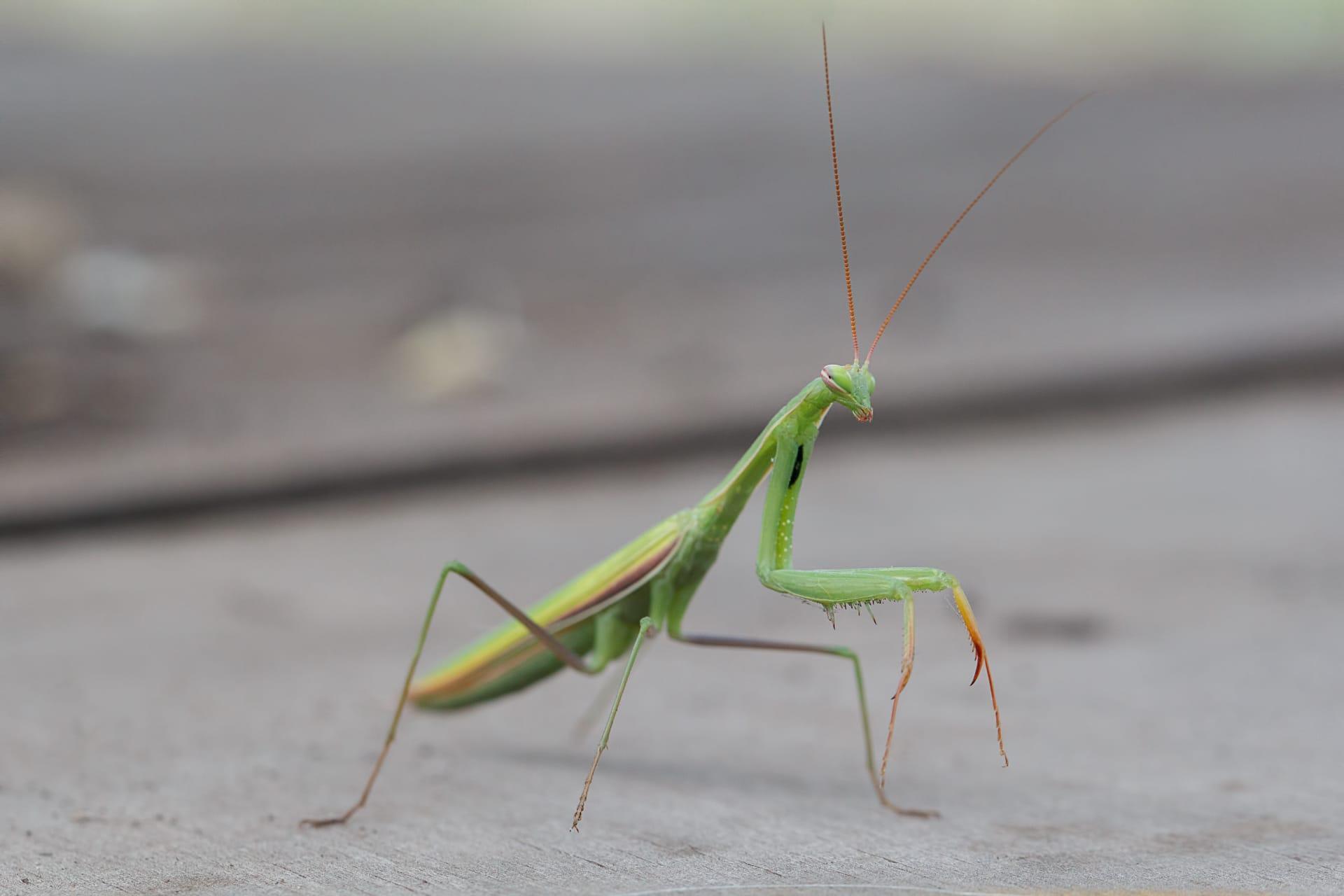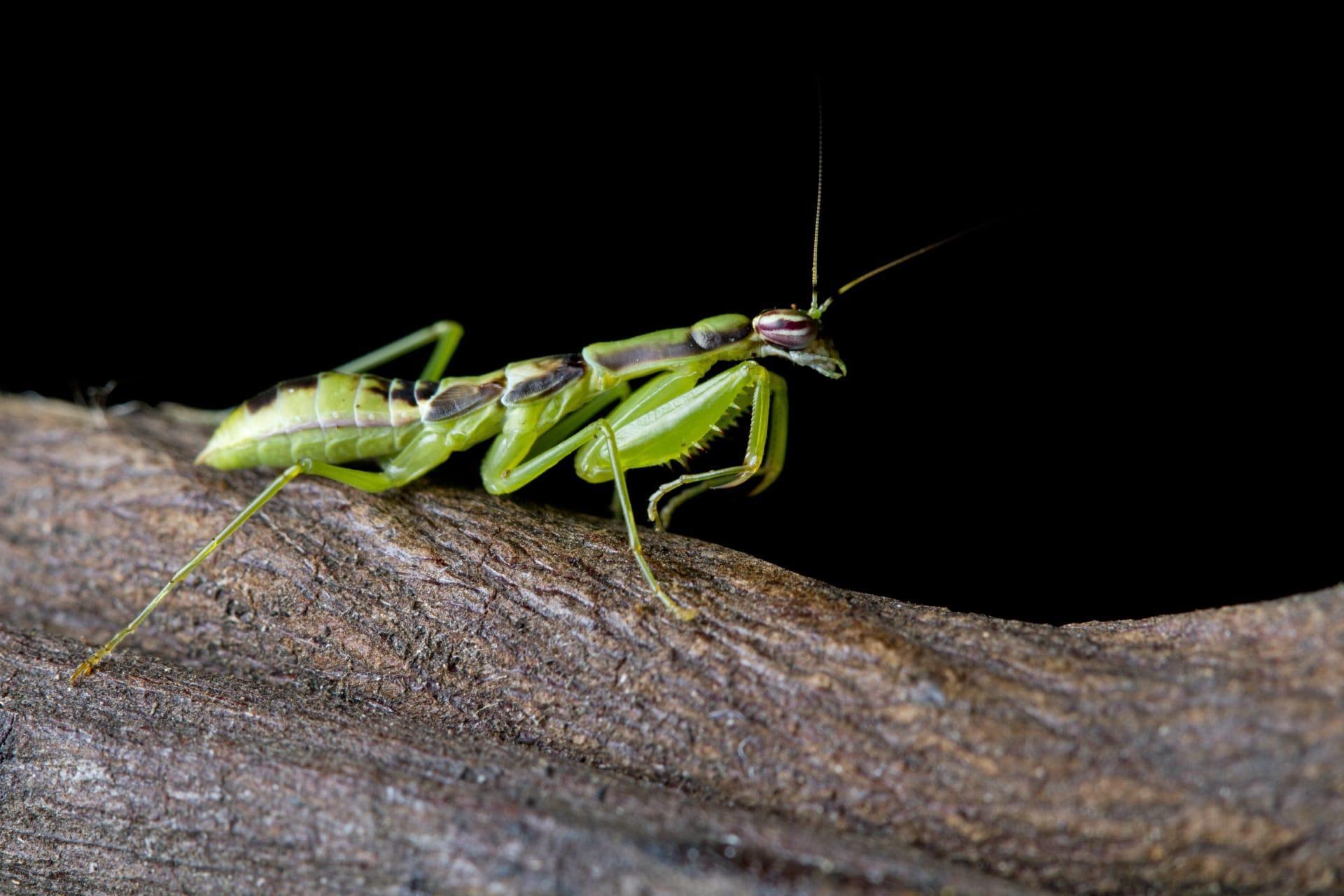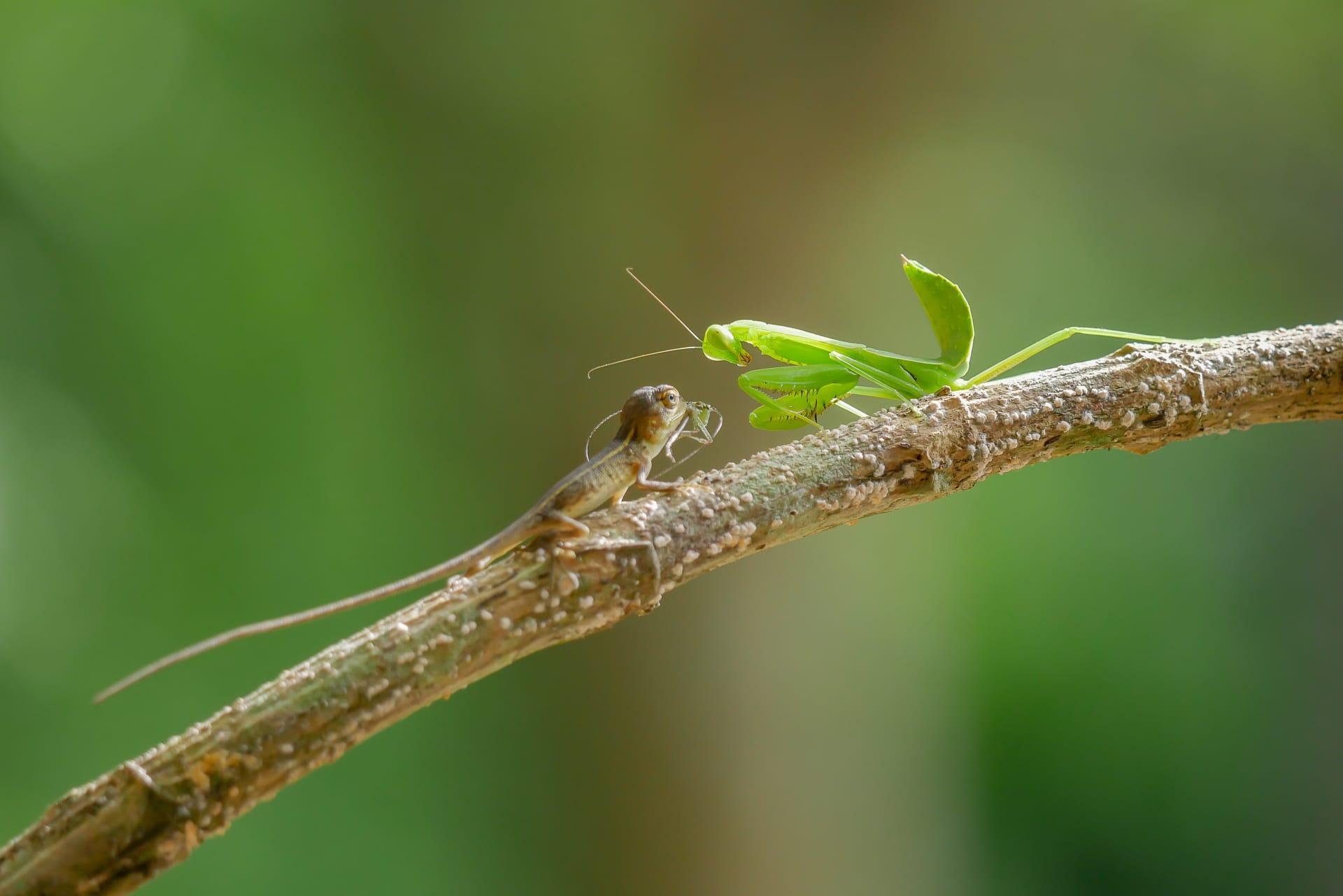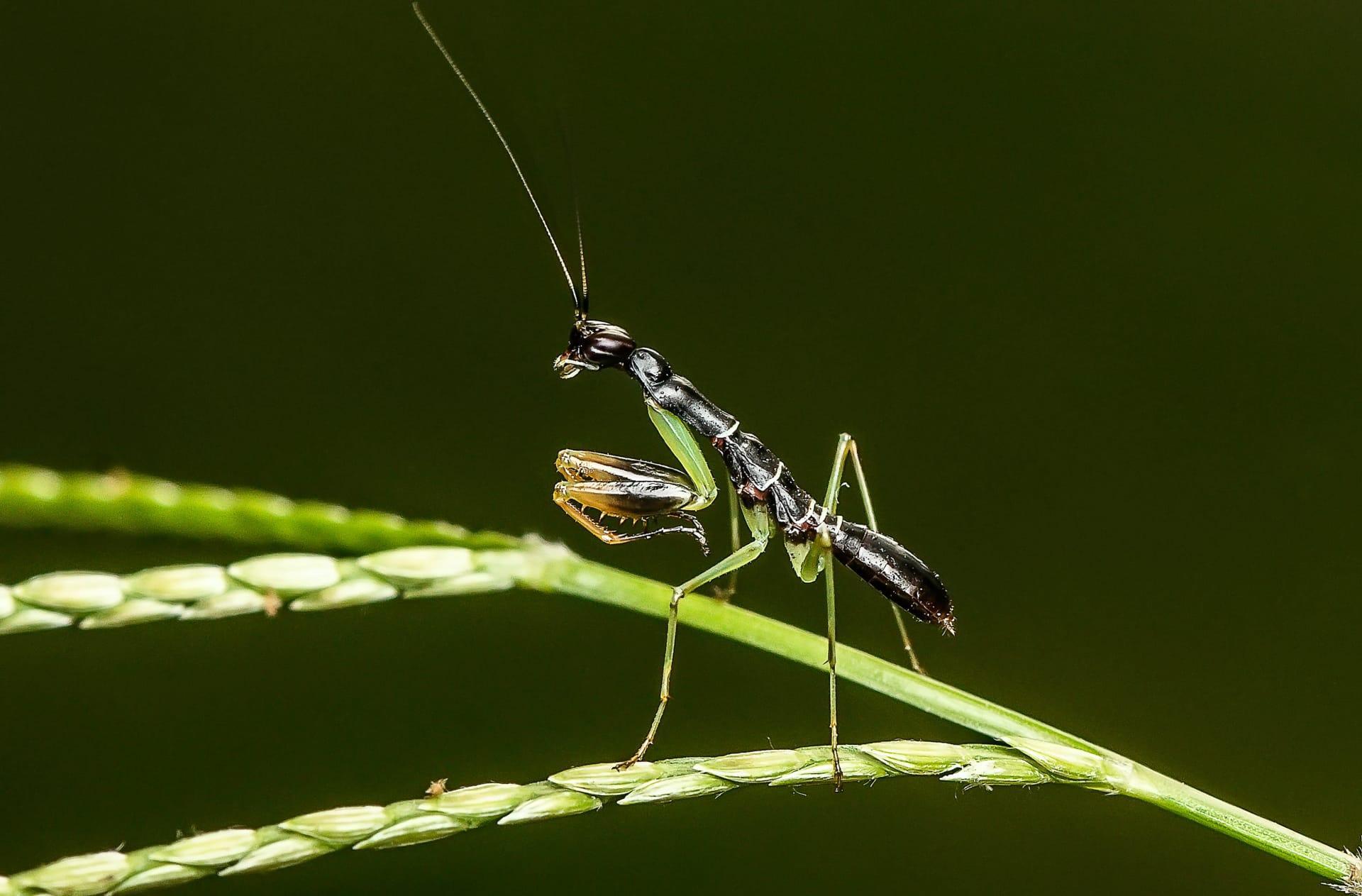1
Praying mantises are known for their unique hunting skills. Unlike many other insects, they use their powerful, elongated front legs to snatch prey in a lightning-fast move, taking only 50-70 milliseconds. That's faster than the blink of a human eye, which takes about 100-150 milliseconds. These front legs, called raptorial legs, are equipped with spikes, enabling them to grip the prey tightly. Once caught, the mantis devours its prey with its strong mandibles.
Another fascinating aspect of praying mantises is their ability to turn their heads 180 degrees. This ability is rare among insects. Their flexible neck, a unique feature in the insect world, allows them to scan their surroundings with a two-eyed stereoscopic vision. This vision is crucial for depth perception when hunting. Each eye moves independently, helping them to detect movement of prey or predators effectively.

2
Praying mantises are masters of disguise. Their ability to blend into their surroundings is a key survival strategy. For instance, some species resemble flowers to attract prey. When a pollinator comes close, the mantis strikes. This camouflage also protects them from predators. Their coloration and body shape can mimic leaves, sticks, or even stones.
Another intriguing fact is their life cycle. Praying mantises undergo an incomplete metamorphosis. This means they don't have a distinct larval stage like butterflies. Instead, they hatch from eggs as nymphs, which look like tiny versions of adult mantises. These nymphs go through several molts, shedding their exoskeleton as they grow, before reaching adulthood. This process can take a few months to a year, depending on the species and environmental conditions.

3
Praying mantises have a notorious mating behavior. The female sometimes eats the male after or even during mating. This behavior, known as sexual cannibalism, provides the female with nutrition that can be beneficial for the development of her eggs. However, it doesn't always happen and varies among species. In some cases, the male escapes unharmed.
Another remarkable fact is their role in pest control. Praying mantises are natural predators of many garden pests, including flies, mosquitoes, and caterpillars. Gardeners often appreciate their presence as they help in controlling pest populations without the use of harmful chemicals. This natural pest control method is both eco-friendly and effective.

4
Praying mantises have a fascinating way of drinking water. Unlike many insects that sip from surfaces, mantises can be observed drinking raindrops from leaves or even catching them mid-air. Their drinking behavior is unique and shows their adaptability to different environmental conditions.
These insects also have a unique auditory system. Praying mantises have a single ear located on the underside of their belly, unlike most insects that have ears on their heads. This ear is sensitive to ultrasound, which helps them detect and avoid bats, their natural predators. The ability to hear ultrasonic sounds is crucial for their survival in the wild.

5
Praying mantises are also known for their aggressive stance towards larger predators. When threatened, they stand tall, spread their forelimbs, and fan out their wings to appear larger and more intimidating. This defensive posture can deter birds, frogs, and even snakes from attacking them.
Lastly, the eyes of praying mantises change color depending on the light. In daylight, their eyes are usually bright green or blue, but at night, they turn dark brown or black. This change helps them adapt their vision to different light conditions, enhancing their ability to hunt during the day and avoid predators at night.